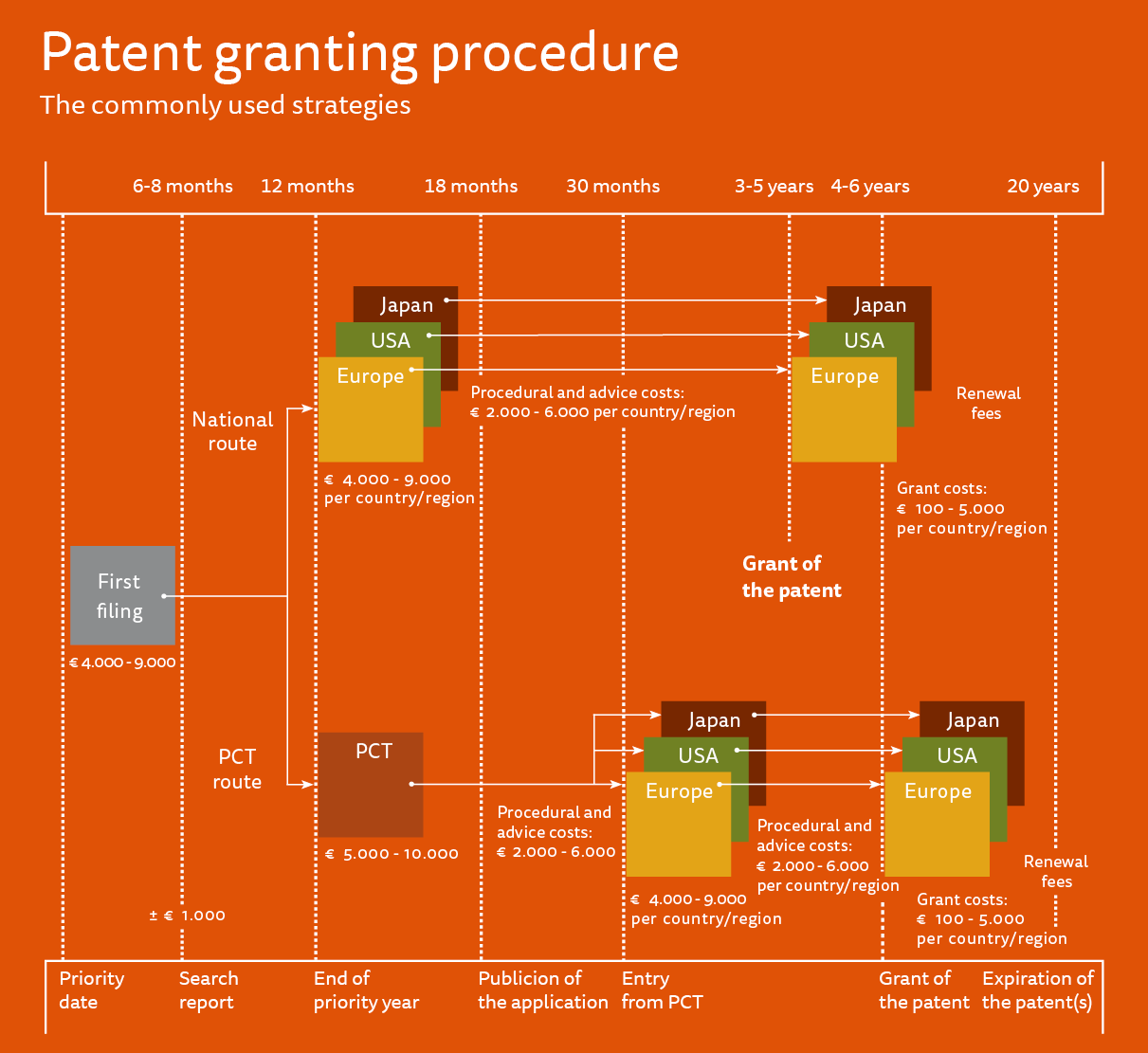

Patenting your invention Does your invention qualify for a patent?
You have just devised a wonderful invention that you would like to protect. To obtain a patent, your invention needs to fulfill three criteria: novelty, inventiveness and industrial applicability.
1. Novelty
It is important that you safeguard the secrecy of your patent application. Your invention cannot be public knowledge, for instance because it has been described in a patent, on a website or in a newspaper article. It cannot have been demonstrated at a trade fair either.
2. Inventiveness
Your creation must be inventive. This means your invention cannot have been obvious to a skilled person in the field. In other words, your idea must be original.
3. Industrial applicability
Your invention must effectively function and be usable in a specific type of industry, for instance as a product in the production process. In other words, your invention must be able to operate on a technical level.
Certainty through patentability search
It can be tricky trying to decide whether your invention qualifies for a patent. If you are unsure what to do, you can opt for a patentability search. This ensures that within one to four weeks you have all the information you need to determine whether it is worth applying for a patent or not. This will help you avoid disappointment during the patent grant procedure should it transpire that your invention is not original enough.
Apply for a patent
A patent protects your invention. The first step is actually applying for a patent. Your invention needs to satisfy three main criteria to qualify for a patent: novelty, inventiveness and industrial applicability.
Patentability search
A patentability search gives you certainty about whether or not your invention is patentable (to read more about a patentability search, click patenting-your-invention. If it should transpire that your invention is indeed patentable, we will help you draft a patent application. The application comprises a document containing a lot of legal jargon, which is important for the rest of the procedure. This is why we will help you draft this and ensure it is done properly and thoroughly.
Different routes
The next important consideration in applying for a patent is deciding in which countries you want your patent to be protected. In principle, all options are open to you, but we will briefly explain several of the most commonly used strategies.
Patent applications are frequently filed for the Netherlands, Europe or the rest of the world (through the PCT procedure – see below). We are also able to arrange national patent applications for you outside the Netherlands and Europe or through other avenues than the PCT procedure. NLO has US patent attorneys among its employees. They can help you secure a patent in the United States, whether through a national application or through the PCT procedure. For more information, read U.S. patent applications
The initial stages of each avenue (drafting and filing the application) are identical; it is only later in the process that the procedure can differ substantially depending on the avenue taken. For more information, please visit our grant procedure page.

Grant procedure
The grant procedure begins when you file a patent application. During this procedure, your patent application will be either approved or denied. Our experts will assist you every step along the way towards obtaining a patent. While each country has its own procedures, the two main systems are the following.
1. Examination system
In an examination system, the patent-granting authority substantively checks whether your application meets the requirements of novelty, inventive step and industrial applicability. To this end, an examiner performs a novelty search to identify the prior art. He will then enter into discussions with you or your NLO patent agent until consensus has been reached on patentability. Without such consensus, the patent will not be granted.
2. Registration system
In a registration system, the patent-granting authority only checks whether your application meets the statutory procedural requirements. While the process does usually include a novelty search, its outcome has no immediate consequences for the granting of the patent.
Most countries (the United States, China, Japan, etc.) have an examination system, this is the same in Europe. The Netherlands uses a registration system.
Post-grant
The approval of your patent is followed by a few necessary subsequent steps:
- Validation
The next step after the European Patent Office (EPO) has granted you a European patent is: selecting the European countries where you want your patent to be legally valid. The validation of your patent is done for each country separately. - Patent maintenance
All of your patents and patent applications must be maintained, which is subject to an annual maintenance fee. As part of our services, we monitor current amounts, payment terms and due dates of the annual fees worldwide on your behalf and ensure timely payment. - Patent changes
A patent is an intellectual property right granted to a proprietor (patent holder). Changes may occur after granting, such as changes of name and address, a transfer (sale) of your patent or its licensing to a licensee.
Go to patent agreements if you want to read more about how we can assist you in drawing up the relevant contracts, and to IP Services to read about our post-grant services.


